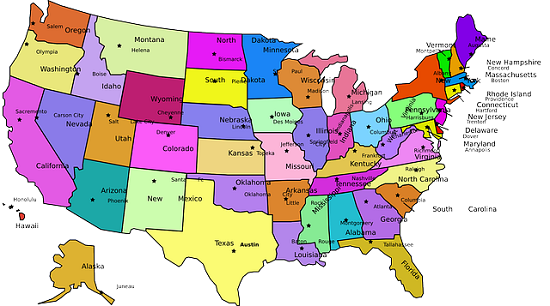For the vast majority of folks, running a cannabis business is harder than giving birth upside down.
With the ever changing rules and regulations, business owners have to stay way out ahead of the information. And then there’s the relative instability that comes with selling a product that’s federally prohibited.
It’s no cakewalk.
So imagine, if you dare, the challenges of multi-state cannabis operations. It’s enough to make the mind implode.
What’s a multi-state operator (MSO) to do?
Pick the State with the Strictest Rules
This is a good place to start, at least. And most MSOs agree that there’s value in attaining thorough knowledge of the state with the most stringent rules and regulations.
Abiding by the rules of that one state allows them to standardize their practices across all states and maintain uniformity.
Yeah, it can be a bit of buzz kill. Especially when it comes to things like packaging. Because states with more lenient rules will allow for more creativity and freedom of expression. And designers love this.
But it doesn’t make economical sense to have different designs or standards for each state based on their rules. Plus, there’s no opportunity to implement uniformity – which is crucial for viability of the product from state to state.
Even so, standardizing ingredients and methods across operations in multiple states is not as simple as just following the most prohibitive state’s rules.
There are nuanced differences from state to state, so MSOs must be aware of these. And that can take a lot of time and energy.
Facing the Challenges of Multi-State Cannabis Operations
There are no easy answers. (There rarely are, though.)
But more than a few companies have managed success with multi-state cannabis operations. Here are just a few of the ways they did it:
1. Avoiding Being First to Market
One company found success by seeking out highly regulated markets that enforced strict rules and put a limit on the number of those who can be licensed. They they ensured they were ready for these markets, but were not the FIRST to market.
They were also aware of their capabilities and able to find partners who could balance out their weaknesses. And finally, they found ways to cut costs, including modular building construction.
2. Having a Single But Scalable Product
Another company was able to go not just multi-state, but multinational, by focusing on a single product that was easily scalable and could be used in a myriad of ways so they could break into additional markets.
By researching these markets to vet promising partners, as well as diversifying their product and brand, they established distribution networks to tap into those new markets.
3. Making Personal Connections
A third cannabis company based in California has expanded to markets in Canada and China by emphasizing the importance of personal relationships and having people on the ground in those key markets to create such relationships.
Having these connections allowed them to more easily diversify and expand into ancillary product lines that complemented their own. (Of course, having an IPO giving the company the capital it needed certainly helped too.)
4. Starting Strong Locally
In the case of another company that managed to expand beyond their home state of Rhode Island, they started on the local level by finding strong partners there.
Like the others above, they diversified their product offerings, but did so through acquisitions and developing their own products in-house. Additionally, they went public to get the capital needed to fund expansion.
Are You Ready to Expand?
Whether you’ve got a cannabis business and you’re willing to face the challenges of running multi-state cannabis operations, or you’re content to keep things small, there’s always room to expand.
Let us help.
Contact us today to learn ways to grow your cannabis business through insightful and experienced marketing and promotion.
